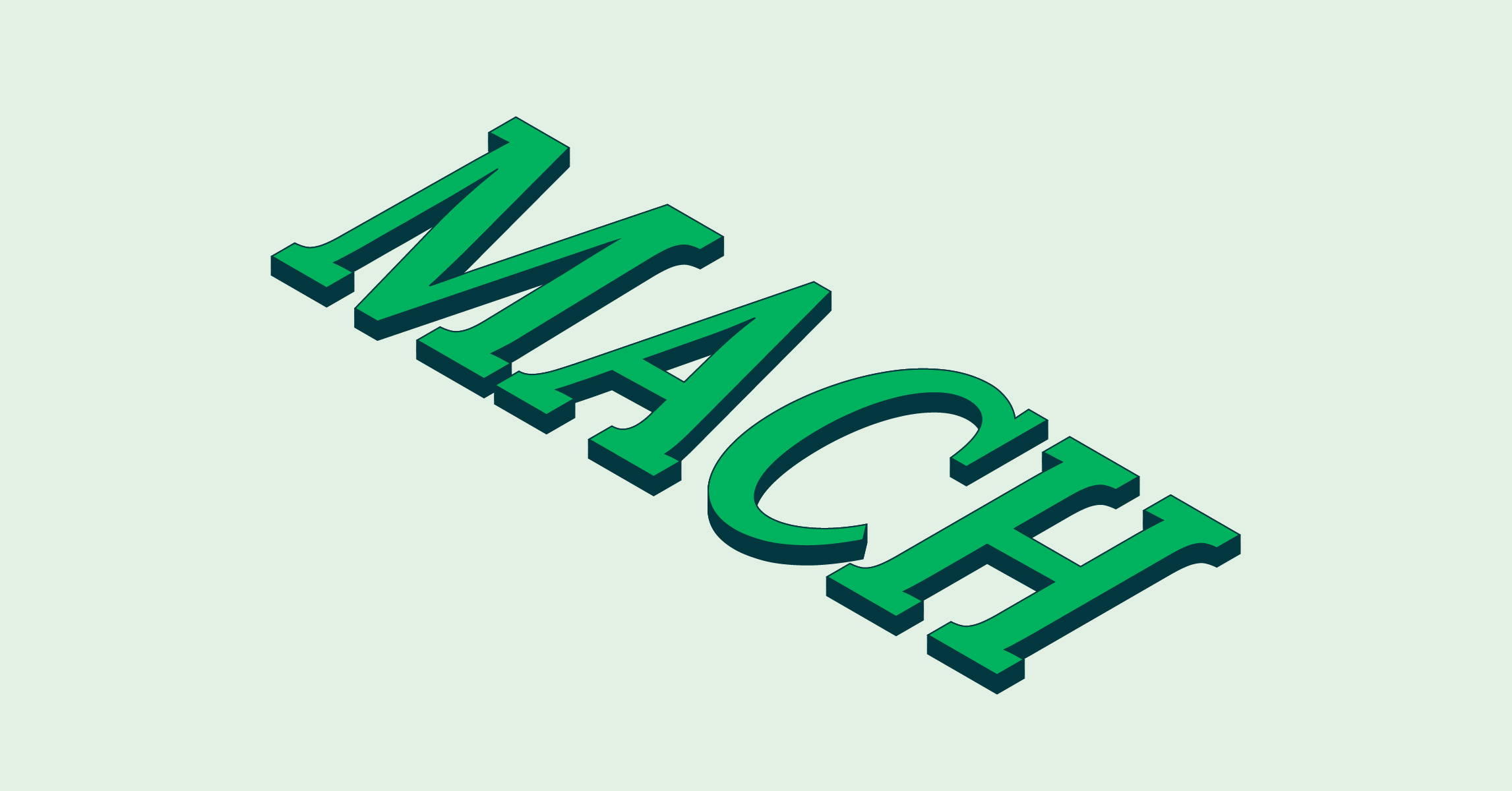- Dec 7, 2021
- --
MACH Architecture Explained in 5 Mins
Experience Magnolia in action
Experience Magnolia's key features firsthand in an interactive product tour.
Take a tour nowAccording to NASA “a plane traveling at the speed of sound is traveling at Mach 1 or about 760 MPH”, but what is MACH Architecture in the digital experience space?
As the need for digital transformation has increased, companies have begun considering the underlying technology that drives their digital experiences. You’ve probably seen this change, too. You may now be recognizing that your suite-style technology stack is no longer sufficient to keep pace with emerging channels and continually changing customer demands.
Being fast and agile are essentials in the current environment, which means that composability is necessary. Forrester is fully onboard the composability train and mentions that leaders in this area have “architectural loose coupling with APIs and events, a framework of shared objects, data, and intelligence; and strategic ISV partnerships for the innumerable parts of a composed solution.”
So how can a modern enterprise achieve composability? Rather than continuing and failing with legacy infrastructure, many are turning to MACH architecture. Today we’ll explain what MACH is all about, what its benefits are, and show how a composable digital experience platform can help you make the most of MACH architecture.
What Is MACH Architecture?
MACH is a set of principles that encourages composability and enables evolving business needs to be met with easily scalable and replaceable components. MACH is an acronym that stands for microservices, API-first, cloud-native and headless. Here’s what each of those terms actually means:
Microservices: Applications are treated as independently deployed and manageable pieces of business functionality.
API-first: Application functionality is exposed via API to support easy connections.
Cloud-Native: On-premise software is replaced by software as a service (SaaS) solutions that rely on the cloud for storage, hosting, and easier updates.
Headless: Decoupling the front-end presentation layer from the backend logic provides framework agnosticism and makes it possible to deliver content to any front-end interface.
Unlike monolithic architectures or enterprise-suite products that forced companies into using a particular set of tools, MACH supports the best-of-breed approach and flexibility that allows organizations to choose the best tool for each use case. Speaking of, let’s see how else MACH architecture compares to monoliths.
MACH vs. The Monolith
Tight Coupling vs. Headless Separation
In monolithic architectures, the front-end and the backend are tightly coupled together, making them heavily dependent on each other. Usually, this means that the CMS is connected to front-end templates, and content delivery is limited to one channel.
MACH architecture leverages a headless approach that separates the front-end and the backend allowing front-end experiences to be deployed on any channel. Also, any changes made to the front end don’t impact the backend.
On-Premises vs. Cloud-Hosted
With MACH architecture, enterprises can have their applications hosted in the cloud rather than on-premises. This reduces the complexity of having to host software, worry about updates, and increase applications’ scalability without the additional costs that might be incurred from an on-premise solution.
Monolithic Architecture vs. Microservices
The traditional monolithic architecture approach, applications are built as a single unit, allowing all functionality to be stored and managed in one place. Unfortunately, in today’s environment where companies favor best-of-breed solutions to meet all of their business needs, a monolithic architecture can be challenging to work with.
On the other hand, the microservices approach of MACH makes it easier to scale each microservice independently. Plus, it increases vendor flexibility, allowing you to select the best tool to solve a specific problem rather than having to consider the entire technology stack.
Complex Integrations vs. API-connectivity
Integrating new technologies can be challenging with traditional monolithic architectures as each integration needs to be heavily customized. On the other hand, MACH leverages APIs to create smoother integrations, whether that means connecting to new pieces of software or another front-end interface to deliver unique experiences.
The Benefits of MACH Architecture
So, MACH does things differently from traditional approaches. But what does that mean for your enterprise business? Here are some of the benefits MACH can provide:
Faster Development Speed
Let’s say you have a situation where you need to update your ecommerce platform, retool your analytics, and upgrade other marketing tools. With MACH, you don’t need to break everything down to make these changes. Your developers can choose to integrate one solution at a time without replacing the entire tech stack. It also means that they can release a minimum viable product (MVP) and prototype quickly when building new products.
Future-proof Technology & Innovation
Customer demands are constantly changing, and this can present a problem for any enterprise business. With MACH architecture, you can make changes quickly and react to these changes and embrace new products and technologies that enhance the customer experience.
Best-of-breed Solutions
MACH enables you to pick the best solution for each job. Instead of being limited by the analytics tool that came with your suite, or the CMS solution that’s part of your ecommerce tool, you can easily evaluate vendors and choose the best one for each job without worrying about vendor lock-in.
Why A Hybrid-Headless CMS Is Needed for MACH
MACH architecture continues to grow in popularity, and that means even traditional suite solutions can adopt it. However, some suite solutions aren’t as advantageous for MACH. Here’s why a hybrid-headless CMS provides the best foundation for MACH:
Built With Composability In Mind
A hybrid-headless CMS is built with composability in mind as it’s API-based and headless from the ground up. While traditional CMS platforms can attach APIs and claim to be headless, their underlying architecture isn’t truly built to be headless. This limits how effective the approach to MACH can be.
Supports Marketers
A pure headless CMS can support the MACH approach; however, a hybrid-headless CMS also assists marketers in building digital experiences. This includes the visual experience management, drag-an-drop tooling, and preview that they were accustomed to with traditional CMS platforms. As a result, marketers don’t need to rely on developers to assist them with even the smallest changes on the primary website or another digital channel.
Frees Up Developers
With less time spent helping marketers make adjustments to the images on their blog posts and other activities, developers have more time to focus on creating new functionality, other front-end interfaces, or entirely different products.
Building Acme’s Composable DXP
This white paper will demonstrate how to plan and implement a composable DXP using the example of Acme, a fictitious retailer. You can apply the same practices to your use case.
Building a Composable Digital Experience Platform
Magnolia is a composable content platform. And by combining the functionality of an enterprise DXP suite with the flexibility of an API-first headless solution, Magnolia enables you to embrace composability and launch digital experiences at speed–maybe even at 760 MPH.
See our white paper Building Acme’s Composable DXP to learn more about Magnolia’s composable capabilities.











